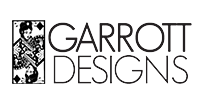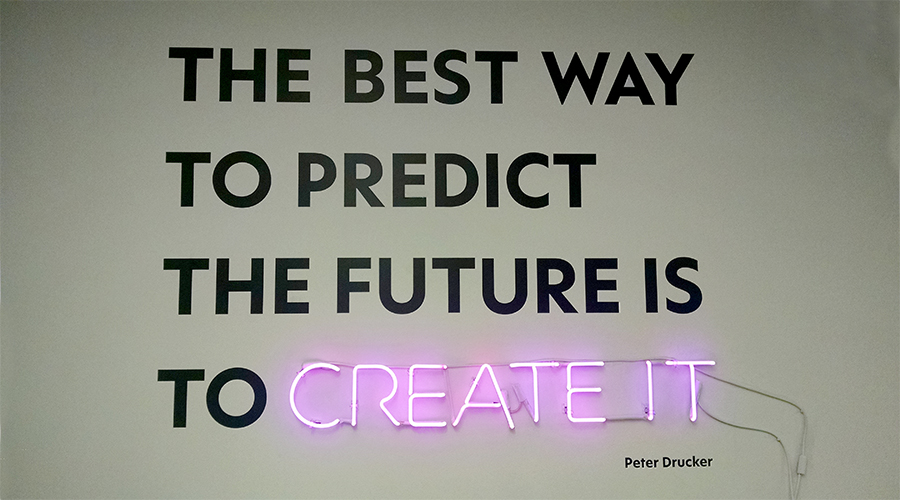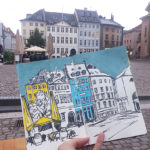Scenario Planning for Brand Design & Development
The world market is changing at an increasingly rapid pace. Technology has accelerated development while globalization has connected people with more options than ever before. As consumer needs become more fluid and increasingly specific, a strategic long-term Scenarios approach to product design and development will be necessary for brands to thrive.
Why Scenario Planning
In Scenario Planning methodology there are multiple alternative futures. The future is not pre-determined or predictive which means we have choices that influence the future. Using multiple futures methodologies can help brands navigate and cultivate markets based on strategic design development by identifying opportunities as they unfold.
Scenario Planning embraces uncertainty, it’s not analytic or qualitative as it considers non-linear trajectories and works backwards to define narratives that are actionable. Discontinuity is essential for design differentiation. The Wild Card is the sweet spot.
As Bruce Springsteen said in his autobiography, “1 + 1 = 3, that’s Rock & Roll.” Isn’t good design about Rock and Roll? 1 + 1 = 3 Scenarios helps build the future of Good Design. The wild card is the plan. By identifying and strategically designing into uncertainty, brands can influence the future by driving development in emerging markets.
What is the Problem?
Design tends to be short sighted and reactive in terms of development. Typically, product and fashion design industries look eight months to two years out using trend analysis and past sales data to develop “new” assortments. This model is linear with inevitable diminishing returns that ultimately drop-off. A reactionary business model will not survive by chasing best-sellers until inevitable consumer interest bust.
The Innovator’s Dilemma
Let’s consider the fashion industry. We know it is highly volatile and uncertain, containing many competitors and no one taking market share for very long if at all. The market is highly diluted with not much differentiation and is failing consumer interest beyond commodity. At the mass market level, many companies maintain a reactive business model approach to development as described above. At the luxury level status quo is maintained. Sameness is the trend.
Ripe for Disruption
The fashion company Resonance took a holistic approach to changing the industry beyond supply chain solutions. Resonance has developed a quick turn production model that enables designers to produce, 1st sample to delivery, in just weeks. Designers can navigate market shifts quickly and innovate simultaneously. In this example, Resonance became the wild card in the industry by mitigating the risk of discontinuity in design. Traditional fashion companies are currently employing forecasting methodologies that develop next year’s spring line (uncertain) based on today’s retail sales and assortments. Data is linear continuity, by the law of diminishing returns and the current rate of acceleration, that product line may be over before it even hits retail (wild cards). If a company is developing 100+ styles per 3-month delivery, as many mass fashion brands do, that’s huge overhead with little competitive advantage and high risk.
Looking for Opportunity
After nearly ten years of successful operation, women’s fashion brand Misha Nonoo recently threw away the traditional play book to develop a direct to consumer model from scratch (uncertainty). The brand went niche with smaller buildable collections in limited high quality fabrications (discontinuity). Taking a seasonless and streamlined approach to a concept called “The Easy 8,” Misha Nonoo runs tight and lean. The brand uses data to communicate with their customers which enabled development based on foreseeable opportunities (wild cards) such as moving into inclusive size fulfillment.
Friction & Discontinuity
In these two examples, discontinuity led to innovation. Wild cards and uncertainties are opportunities as much as they could be threats. Scenario Planning methodologies are different from trend analysis as the process identifies opportunities, enablers, inhibitors, uncertainties and whitespace to mitigate risks necessary to navigate with agility.
Megatrends to Scenarios
Companies use megatrends as the basis for Scenario Planning. Megatrends are indicators of important drivers and inhibitors and do not occur on linear trajectories. Scenarios is a five-phase collaborative thinking process for quicker and precise innovation to help management make better strategic decisions. By determining context and transaction environmental trends, an organization can navigate more effectively to seize opportunities and mitigate threats. Scenarios attempts to understand the dynamics of friction between drivers and inhibitors to determine well timed opportunities.
Relying on data alone, provides a linear solution and does not account for shifting of enabling factors. Non-linear activity is where innovation develops providing an indication of timing and a target for development.
What is Scenario Planning
Scenario Planning provides systematic methodologies that helps organizations develop a resilient mindset approach to inform strategy based on the company’s position and goals. By confronting the unknown and thinking the unthinkable, multiple plausible futures can expose patterns of opportunities, strengths, weaknesses and threats to help navigate market shifts as the future unfolds. Scenario Planning simplifies complexity and creates dialog across stakeholders to discuss strategic innovation and foster buy-in.
Designing the Future
Historically, Scenario Planning is a technique used by military, policy- makers and finance business organizations to strategically prepare for the future. If this methodology helps businesses innovate and mitigate risk, shouldn’t it also be used to inform design and development?
Many industries, especially technology have seen more change in the last five years than they’ve seen in the last fifty and that trend is accelerating. It is no longer enough to look eight months to two years out. At the current rate of acceleration, five-year development is happening now which means looking ten to fifteen years out is necessary to developing an agile and resonating company. Organization leaders in product development often overestimate the short-term and underestimate the long-term which can lead to perilous consequences, especially for older and larger companies.
It is a business imperative to develop capacity for foresight and agility as well as innovation. By taking a longer view, design companies can develop new areas of opportunity to influence future markets. Scenario Planning could help design firms influence and cultivate the future.
Does Strategy Kill Creativity?
The form of strategy that kills creativity is the form that excludes it. Scenario Planning is structured to unsilo the strategic process with inclusivity of all stakeholder’s perspectives. Using storytelling, the process focuses on potential changes in the environment, turns friction into opportunity and hypothesizes possible futures with flexibility and creativity. By exposing makers to synergistic interconnected trends with major variables, designers are stimulated to ideate and prototype under multiple conditions putting creativity out in front rather than developing reactively under limiting constraints.
The interconnection of strategy and design can serve to inform brand development with efforts to influence the future toward good design by acting on relevant cues as the future unfolds. What could be more creative than framing the future according to design?
How Can I Find Out More?
To further explore your curiosity about Future Studies, Scenario Planning, Megatrends and Strategy, contact the Copenhagen Institute for Future Studies on their website at https://cifs.dk/
















